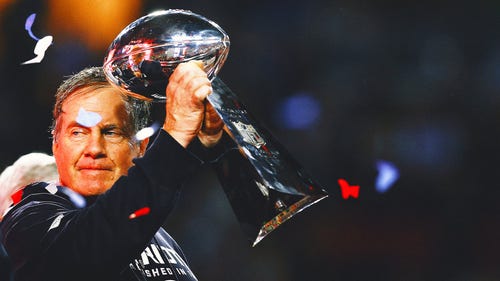
NFL's turf gurus gird for historic Super Bowl
It may qualify as a small irony that in the run-up to the first outdoor, cold-weather Super Bowl, the people seemingly least threatened about the possibility of bad weather are the folks whose job is to protect the surface on which the game will be played.
It should come as no surprise, since the NFL's groundskeeping experts are used to dealing with the elements - and improvising when they have to.
Like the time when rehearsals the night before one Super Bowl put foot-deep indentations into the NFL logo at midfield, necessitating an emergency trip to a local high school field where crews dug up chunks of sod as a replacement.
Or the 1970 game between the Kansas City Chiefs and Minnesota Vikings at Tulane Stadium in New Orleans, when crews had to spread wood chips and sawdust across the field and paint it green to look presentable.
None of that figures to happen at New Jersey's MetLife Stadium in February, but there certainly will be more scrutiny as the NFL uses the game as a test case for possible future cold-weather games. For all the extra attention, Ed Mangan, the league's field director for the Feb. 2 game, likened his job to an offensive lineman's, in which anonymity is its own reward.
''We set the stage for the players and that's our job; if you can't accept that, you shouldn't be doing it,'' Mangan said. ''The best compliment is that nobody mentions the field at all. If they are, it usually means something is wrong.''
MetLife Stadium, home to the New York Giants and New York Jets, likely will make things easier for the NFL in one respect. It has an artificial playing surface, which means the league won't have to truck in specially-grown sod as in previous Super Bowls. The re-sodding of Super Bowl fields has become a science, with sod grown up to two years in advance at special farms. (For home lawn enthusiasts, the NFL uses a hybrid Bermuda grass as a base, overseeded with perennial rye grass, Mangan said).
Artificial turf can be affected by snowy or icy conditions but is a big improvement over natural grass, according to Jets kicker Nick Folk.
''The toughest places to kick are the ones that are outdoors with grass, like Chicago and Cleveland,'' Folk said. ''I mean, it's tough here, too, but you don't have to worry about the turf. It's going to be there and you don't have to worry about your footing or falling. If you check it before the game, you've got it pretty much figured out, hopefully. It's going to be interesting to see how it plays out in the Super Bowl, that's for sure.''
For February's Super Bowl, the actual game may put less stress on the field than the days leading up to it, Mangan said. Rehearsals for pre-game, halftime and postgame activities will bring heavy traffic to the field for up to 20 hours, or about six times longer than the average game lasts.
Sometimes the rehearsals can uncover unforeseen problems. Legendary groundskeeper George Toma, who has worked in some capacity at every Super Bowl, recalled the singer Chubby Checker preparing to rehearse his halftime routine on a rolling jukebox that almost immediately sank into the stadium sod and wouldn't move.
''I told them the tires weren't wide enough, so they went up and put on wider tires,'' he said. ''But then they tried to bring it down the tunnel and it was too wide to fit in the tunnel. We worked all night to get it fixed right.''
If the weather takes a nosedive leading up to this Super Bowl, Mangan's crew of about 30, with help from the crews of the Giants, Jets and MetLife Stadium, will keep the field warm and dry with heaters and blowers under a tarp. They'll do the same for the practice fields the teams will use - the Giants' adjacent to the stadium and the Jets' in Florham Park, about 20 miles away. On game day, they'll be at the ready with power brushes, brooms and shovels in case yard lines have to be cleared off, as happened in last Sunday's blizzard in Philadelphia. Mangan said he is also experimenting with de-icing liquids and other snow-melting components.
''We don't want to be a hindrance to the game or stop the game, but it's going to be hard to see the game on the field with no yard lines,'' he said. ''We don't want to interrupt the flow of the game, but the field needs to be playable.''
Depending on the weather, the end zones, which will feature the teams' names and logos, could be rolled up and kept warm and dry in tents on-site during the painting process, Mangan said.
It's a far cry from the first Super Bowl when Toma went to Los Angeles by himself with a three-by-four-foot trunk of equipment that included a bunch of two-gallon spray cans to paint the field. Today, tractor-trailers are needed to haul all the gear.
''The weather is our largest challenge,'' Mangan acknowledged. ''The weather is the weakest link, it's something we can't control, but it's something we are prepared for.''
--
Associated Press writer Dennis Waszak Jr. contributed to this story.










